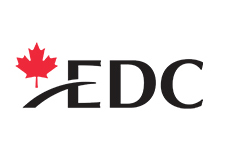Intellectual property strategy: Your IP is a company asset
Intellectual property is an asset
Intellectual property (IP) is a company asset and should be managed as such. An IP strategy is simply a plan—consistent with the company’s business goals—to acquire IP assets and leverage the most value from existing IP assets.
The definition of value is assessed in the context of the business goals. Even though IP assets may play a central role in the business strategy of a technology or biotechnology company, acquiring and owning IP will not overcome poor business strategy and make a company successful.
Strategy for acquiring and managing IP
There are usually drafting, filing, prosecution and maintenance costs associated with acquiring and managing IP.
A company should consider what their return on investment is for any money spent on IP, and take into account any cash-flow management issues. Potentially, depending on the overall budget, the money may be better spent elsewhere, such as monetizing a web-based technology product or service faster.
However, IP assets should also be considered from a long-term point of view. For example, if your biotechnology business depends on acquiring patent protection in order to attract outside investment, then that is money well spent.
Consider all types of IP
There are multiples types of IP—mainly patents, trademarks, copyrights and confidential information—which are all different legal tools designed for different purposes.
Patents are not the only kind of IP. While keeping in mind the business goal, consider all types of available IP protection. This is the only way to ensure you are pursuing the right type of IP strategy. Ask yourself these kinds of questions:
- Is protection as a patent, trademark, copyright, trade secret or industrial design/plant breeders’ right appropriate?
- What will the chosen type of IP protection help me accomplish?
- What am I trying to accomplish and will IP help me do this?
IP policies on acquisition, exploitation, monitoring and enforcement
A company will usually need to develop policies on the acquisition, exploitation, monitoring and enforcement of their intellectual property.
Acquiring IP includes managing the chain of title to company-developed IP. Employee agreements and independent contractor agreements should clearly deal with IP ownership issues.
Take stock and create an inventory list of your company’s existing and potential IP.
Exploiting IP is maximizing the acquired IP’s value. You may do this by protecting your company’s IP in the form of brands, technologies or secrets. But it may involve other commercialization and monetization strategies .
Monitor the internal and external use of your IP. Again, this is not just limited to one specific type of IP; you must systematically monitor all types of IP in your portfolio.
Once IP rights are acquired, you must take more steps to enforce those IP rights; if you do not, then there is no consequence to a potential infringer. Unfortunately, enforcing IP rights through litigation is costly and uncertain in outcome. Deterrence and negotiations may be viable alternatives.
Use the CIPO, USPTO and WIPO databases for your research
Canada, like many other jurisdictions, has online patent and trademark databases. It is possible to extract competitive intelligence from these databases.
Read and review the wares and services associated with trademarks for other companies. Examine the state of the art in a specific field of research by conducting patent database searches. In other jurisdictions, such as the US, there may be further caveats that need to be considered before conducting patent research.
A potential pitfall is that patent searching is complicated since any public disclosure from around the world may be relevant. For example, did you check the international patent cooperation treaty (PCT) applications?
On a practical level, you can do an ad-hoc analysis. However, a more thorough analysis requires the skills of a patent agent, patent searcher or patent lawyer.
Marketing value of sharing information and open collaboration
At times, information or processes developed by a company does not fit into a category of intellectual property or cannot be monetized through any traditional strategy.
Sharing that information through social media, or as a whitepaper, may demonstrate expertise in an area and can build goodwill in the brand; doing this may have advertising and marketing value. Of course, carefully analyze the implications of any disclosure before releasing the information.
References
Canadian Intellectual Property Office. (2009, November 16). Retrieved November 30, 2009 from www.cipo.ic.gc.ca
United States Patent and Trademark Office. (2009, November 23). Retrieved November 30, 2009 from http://www.uspto.gov/
World Intellectual Property Organization. (2009, December 1). Retrieved December 1, 2009 from http://www.wipo.int
Check out Ontario’s IP Ecosystem Map! Our partners at IPON designed this tool to help guide Ontario innovators & researchers on their IP journey. It’s an interactive PDF with info on IP service providers across Ontario.


